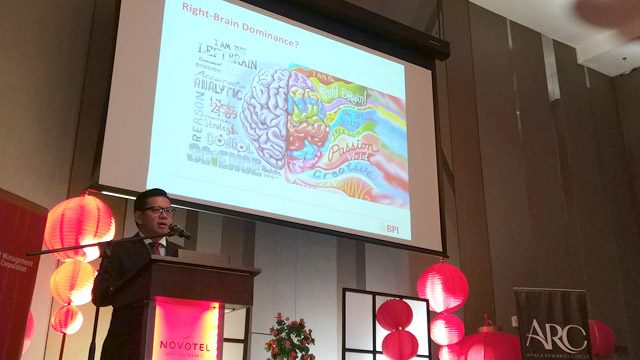SUMMARY
This is AI generated summarization, which may have errors. For context, always refer to the full article.

MANILA, Philippines – Economic growth on par with the world’s fastest growing countries is on the cards for this year despite the peso continuing to slide, according to the Bank of the Philippine Islands (BPI).
“We’re very confident that close to 7% if not 7% growth is very achievable this year,” said BPI lead economist Emilio Neri Jr at the BPI Investment Outlook 2018 on Tuesday, February 20.
The crucial factor in this year’s growth, Neri noted, would be the government’s promise to ramp up infrastructure spending. If this does not materialize, growth could drop to below 6%.
“The [political] honeymoon period is over and all of the spending commitments have to take place despite all the challenges with the absorptive capacity of government agencies. The reform to obligate all this spending to one year instead of two will help a lot,” he explained.
BPI’s current forecast is 6.8% for 2018, though Neri noted that this could still change. The forecast also falls below the 7-8% official government target for this year.
For 2019, BPI’s forecast is 7.2%. Neri added that 8% growth is possible in 2019, but not this year, due to a cyclical slowdown in major economies around the world.
Any growth beyond 7%, the BPI economist noted, “would probably depend on the global environment and we are assuming a more conservative outlook for the rest of Asia, Europe, and the US.”
“We don’t see a recession happening in the US but there could be a bit of a slowdown,” he added.
Weakening peso, growing trade gap
The BPI economist also pointed out that the growth would come along with a weaker peso and a bigger trade deficit as the infrastructure buildup progresses with more imports of capital equipment.
“The overall trend because of the trade gap continuing to widen is for the peso to depreciate 3-4% each year through to 2021,” Neri said.
BPI expects the peso to move to P51.92 to the US dollar by the end of 2018, and hit P53.20 to the dollar by the end of 2019.
Neri pointed out, however, that the peso depreciation has not been a factor in the faster than expected inflation at the start of the year.
The signs point to the tax reform law as the main factor behind January’s 4% inflation rate.
“The peso depreciation is healthy…[if not] the trade gap would get out of control and the growth we are enjoying today will not be sustained,” Neri explained. –Rappler.com
Add a comment
How does this make you feel?
There are no comments yet. Add your comment to start the conversation.